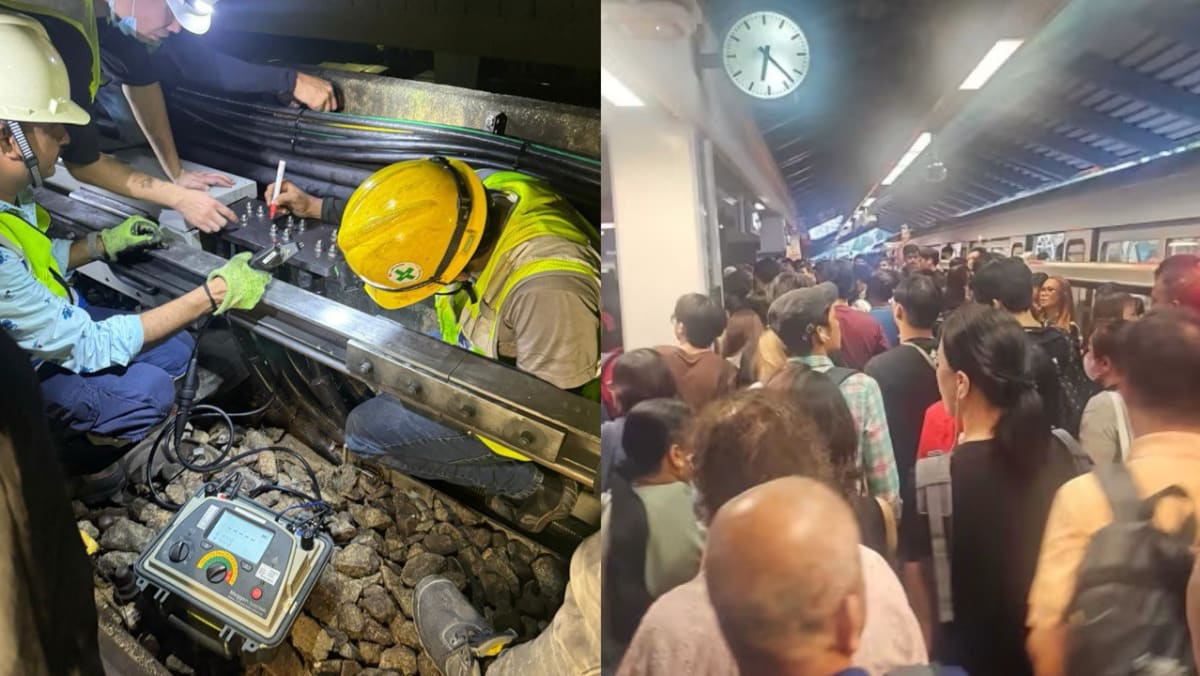SINGAPORE: A component meant to protect equipment against power surges failed to work when lightning stuck on Jun 3, resulting in a power trip that disrupted train services on a section of the North-South Line for more than two hours.
“The condition of the surge arrester in the affected power control box could have deteriorated over time, so it did not operate as intended when lightning struck,” the Land Transport Authority (LTA) said in an update on Saturday (Jun 15).
“LTA is working with the operators to review the maintenance frequency of the surge arresters.”
Surge arresters are meant to protect outdoor equipment against transient power surges, such as from lightning strikes.
Train operator SMRT said on Jun 3 that the lightning strike damaged components in a trackside power control box near Kranji MRT station at about 5.50pm. This affected train services between Choa Chu Kang and Woodlands stations during the evening peak-hour commute.
LTA noted in a Facebook post on Saturday that poor weather and lightning risks prolonged the service recovery.
“SMRT engineers had to physically access the power control box on the viaduct to isolate it, before power could be restored at 7.50pm. Train service resumed at 8.10pm,” it added.
BRIDGING BUSES
Photos and videos on social media showed crowds stranded at the affected stations.
Free regular bus and bridging bus services were operating between Choa Chu Kang and Woodlands in both directions during the disruption. But some commuters complained that not enough buses were deployed.
Providing a timeline of what happened, LTA said bus bridging services were activated at 5.57pm, with the first seven buses arriving at the affected stations by 6.27pm.
Thirty-six buses were deployed in total alongside more than 160 additional employees to guide commuters to alternative rail and bus services.
Bridging buses have a capacity of 80 to 120 passengers while MRT trains can carry up to 1,200 commuters, said LTA, adding that these buses “cannot be a full substitute for disrupted rail service”.
“This is why our longer-term plan is to build up the resilience of the rail network with new lines that are inter-connected with existing lines, so that most commuters could switch to an alternative line when a rail line is disrupted,” the authority added.
Nevertheless, LTA said it has taken note of the feedback from commuters on the areas for improvement.
These include reviewing the provision for public transport operators to maintain a larger fleet of standby buses which could be activated as bridging buses during a rail disruption.
“This move needs to be carefully assessed as having a larger buffer with more standby buses will incur higher costs for the public transport system,” LTA stated.
It concluded that SMRT had responded in accordance with the standard operating procedures on Jun 3, noting that the transport operator “promptly disseminated information” about the disruption and advised commuters on the alternative travel options.
LTA acknowledged, however, that the impact of the Jun 3 disruption was more serious than the major MRT service disruptions in the past two years, partly because some of the previous incidents happened during off-peak hours.
“LTA has taken note of the feedback from commuters on the areas for improvement,” the authority said.
“We will work with our rail operators to implement the follow-up measures to strengthen our response for future disruptions.”

